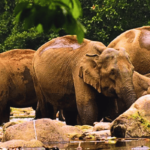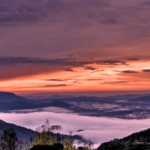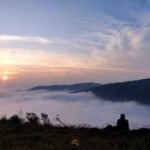Kodaikanal is a very popular place in Tamil Nadu and all over India. It’s a hill station, which means it’s on a high mountain. People have been going there since 1845 when British government workers and Christian missionaries started going. But even before that, people knew about this place from Sangam literature. Kodaikanal is a place where you can go to take a break from the busy city life. You can relax and enjoy nature by going on bike rides or hikes, or just walking through the big forests around the town. There’s a lot to do here for people who like to explore. You can go boating, cycling, horse riding, or trekking. One special thing about Kodaikanal is the Kurinji flower. It only blooms once every 12 years, so it’s a really unique thing to see.
How to Reach Kodaikanal?
By Air: Kodaikanal doesn’t have its own airport. So, if you want to come by plane, you need to fly to the nearest airports. The closest ones are in Madurai (120 km away), Trichy (150 km away), or Coimbatore (175 km away). Once you land, you can take a taxi or a local bus to Kodaikanal.
By Road: By Bus There are regular bus services to Kodaikanal from cities like Chennai, Pondicherry, Coimbatore, and Madurai. The bus stand is in the center of Kodaikanal, making it easy to find your way.
By Car: Taking a road trip to Kodaikanal is a great idea because the scenery is beautiful. But be aware that the roads have lots of curves and steep sections. There are two routes – Palani and Vathalagundu. Check for any road work before choosing a route. Driving to Kodaikanal in your own car can be a refreshing experience.
Here is the list of places to visit in Kodaikanal for 3 days:
- Coakers walk
- Bryant Park
- Kodaikanal lake
- Kodaikanal Lions cave
- Kodaikanal Wax Museum
- Moirs Point
- Pillars rock
- Guna Cave
- Dolphin Nose
- Silver Cascade Falls:
- Kodiakanal Solar Observatory
- Manvannur Lake
- Manavannur Sheep research Center.
- Chettiar park
- Kurinji andavar temple
Day 1
Coakers walk:
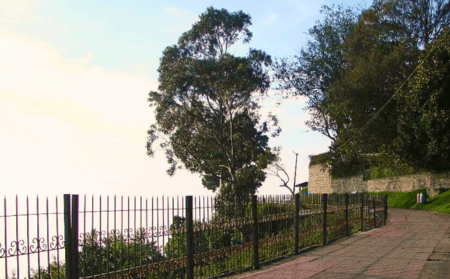
Coaker’s Walk is a popular 1 km path where tourists stroll during the morning and evening to admire the scenic views of hills, plateaus, and rivers, especially during sunrise and sunset. Constructed by Lieutenant Coaker in 1972, it’s conveniently located near the bus stand, railway station, and Kodaikanal Lake. The pathway, starting from Van Allen Hospital and passing St. Peter’s Church, is lined with fences for safety. To the southeast, visitors can spot Pamber River, while Madurai city and Dolphin’s Nose lie to the south. Visitors often engage in cycling, photography, and nature walks along this route. Inside the walkway, vendors sell snacks like bhel and sliced mangoes with masala, and nearby stalls offer warm clothes, t-shirts, and scarves at affordable prices, attracting many shoppers.
Bryant Park:
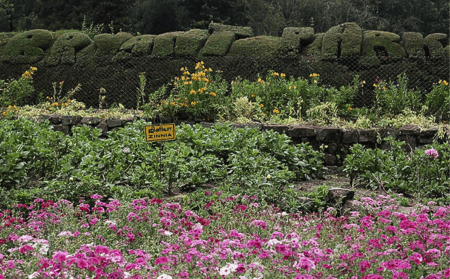
In 1908, H.D. Bryant, a forest officer from Madurai, made a small park near Kodai Lake. Named after him, Bryant Park has grown into a big garden managed by the Tamil Nadu Horticulture Department. It’s a famous spot in Kodaikanal, loved by tourists. With lots of plants and flowers, including over a thousand types of roses, the park is perfect for a peaceful walk. In summer, the park gets colorful with blooming flowers, and there’s a special glasshouse with exotic plants. You can see old trees like a 175-year-old eucalyptus and lots of butterflies and birds. Don’t miss the annual flower show in May, where you can see many flowers from nearby villages.
Kodaikanal lake:
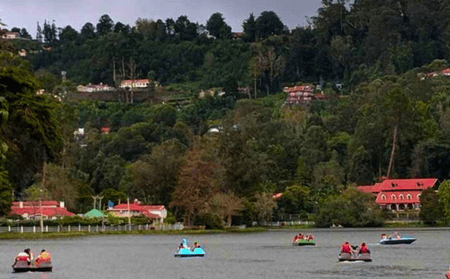
Kodai Lake is a man-made lake shaped like a star. It was built in 1863 by Sir Vere Henry Levinge, the Collector of Madurai. It’s the main attraction of Kodaikanal and covers an area of 60 acres. The lake is about 3 meters deep and has a tarred road around it that’s 5 kilometers long. People enjoy boating and pony rides here, which are relaxing activities. There are many different kinds of plants and animals in and around the lake, including various types of fish. One special plant called Kurinji blooms only once every 12 years and can be found near Kodai Lake.
Kodaikanal lions cave:
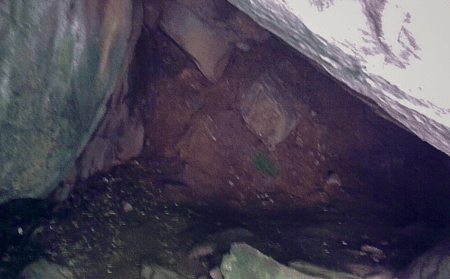
The Lion Cave is found near the Levinge Stream, offering visitors a unique and less crowded experience. It’s located about 120 meters away from the Vattakanal waterfalls. To get there, you need to trek from the waterfalls. It’s best to visit between 9 AM and 4:30 PM because it gets slippery after dark from the waterfall’s spray. The cave is small and partly hidden by green plants. It got its name from a story that says a lion once lived there. If you’re going to the Vattakanal waterfalls, it’s worth taking a side trip to see this cave. But make sure to wear good shoes because the ground can be slippery.
Kodaikanal Wax Museum:
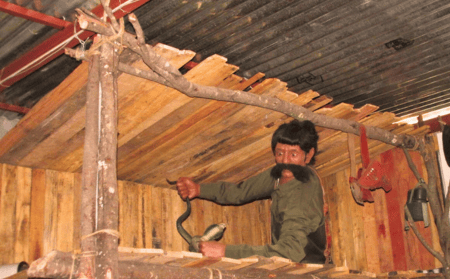
The Kodaikanal Wax Museum, located near the city center, showcases wax statues of famous personalities from around the world, highlighting their contributions in various fields. Unlike traditional museums displaying artifacts like coins and armor, this museum features figures like Mahatma Gandhi, Guru Shankaracharya, Jesus, and popular Bollywood stars. Additionally, visitors can enjoy displays of traditional Indian folk dances. Notably, the museum includes a wax statue of Veerappan, the infamous sandalwood smuggler who met his end at the hands of law enforcement.
Day2:
Moir’s Point:
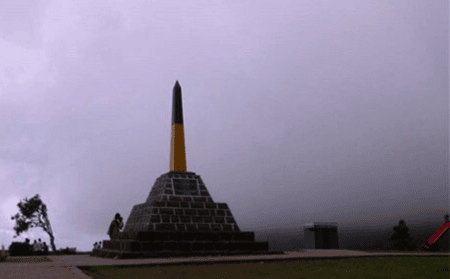
Moir Point marks the spot where Sir Thomas Moir first cut grass to build the Goschen Road. Before 1929, it went by the name Fore Mile Road. There’s a monument standing there, recounting this piece of history. Positioned on the road linking Kodaikanal to Berijam Lake, Moir Point draws many visitors due to its breathtaking valley views. It’s one of Kodaikanal’s most bustling places.
Located approximately 10 km from Kodaikanal Bus Station and just 3 km from Pillar Rocks, Moir Point is not only a historic site but also a scenic viewpoint near Berijam Lake. It sits close to the start of the renowned Berijam Lake Road. Given its proximity to Kodaikanal, tourists often make sure to include Moir Point in their travel plans.
Pillars rock:
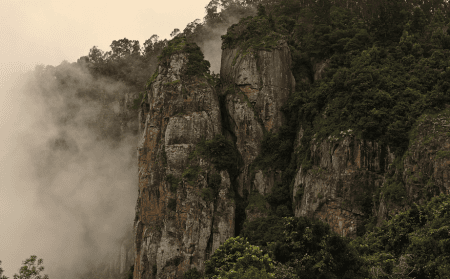
The big Pillar-Shaped Rocks in Kodaikanal attract most tourists. The space between two rocks is called Devils Kitchen, now known as Guna Caves. It’s a popular spot for both tourists and nature lovers. Nearby, there’s a small park with pretty flowers. These rocks, in the beautiful hill station of Kodaikanal, are perfect for picnics. They reach up to 400 feet and offer a romantic atmosphere, with a ‘white cross’ symbolizing love. The view is stunning, sometimes covered in mist, the rocks remain majestic against the hills. It’s a peaceful place to relax and enjoy the scenery, and don’t miss trying the tasty potato and onion bhaji sold nearby.
Guna Cave:
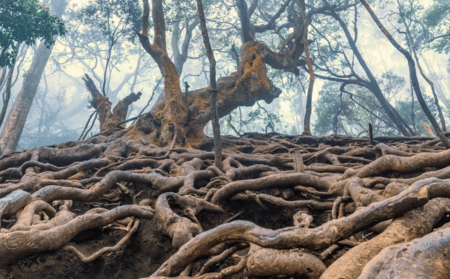
Guna Caves, also known as Devil’s Kitchen, are a captivating tourist attraction near Pillar Rocks in Kodaikanal, Tamil Nadu. Situated about 10 kilometers from Kodaikanal along the Moir Point road, these caves offer a unique blend of natural beauty and mysterious allure. Visitors can’t venture inside due to safety reasons but can admire the caves from a safe distance amidst the picturesque surroundings of Shola trees and lush grass. Legend has it that the caves were discovered by an American in 1821 and are said to have hosted the Pandavas from Hindu mythology. However, it was the filming of the song ‘Kanmani anbodu kadhalan’ from the movie “Guna” that brought fame to these caves, making them a beloved spot for movie enthusiasts. With their intriguing rock formations and rich history, Guna Caves offer an unforgettable experience for nature lovers and adventurers exploring Kodaikanal.
Dolphin Nose:
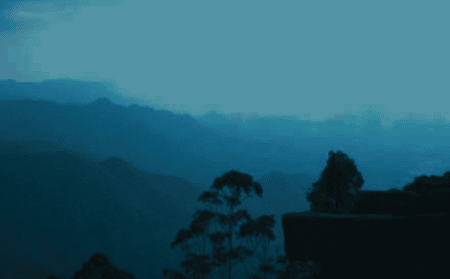
The Dolphin’s Nose viewpoint in Kodaikanal gives amazing views from a flat rock that looks like a dolphin’s nose, standing tall at 6,600 feet. To reach there, you need to go on a moderate 3 km trek through the Palani Hill Range, passing through pine forests and rocky paths. Along the way, you can see a nearby waterfall and village, but food is a bit expensive. When you reach the viewpoint, you can see Catherine Falls, Kotagiri Hills, and the greenery below. On clear days, you might even see Periyakulam Town and Vaigai Lake. But the trek is tough, so it’s not good for kids or elderly people. Overall, Dolphin’s Nose gives a refreshing half-day adventure in Kodaikanal’s beautiful nature.
Silver Cascade Falls:
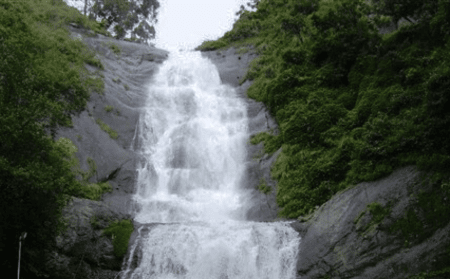
The Silver Cascade Falls, situated just 8 km from Kodaikanal Bus Station, is a must-visit spot on your journey from Kodaikanal to Madurai. Cascading down from a height of 180 feet, this mesmerizing waterfall is formed by the overflow of the famous Kodai Lake, offering a refreshing break during your long road trip. The sight of water rushing down with sheer strength is captivating, and you can even take a dip in the waters if the temperature is suitable. The falls, easily accessible from the road, entice travelers with its beauty. Fruit vendors selling delicious treats add to the experience, making it an unmatched stopover. Whether you’re admiring the falls from the viewing platform or enjoying a swim, the Silver Cascade Falls promises an unforgettable experience amidst the natural wonders of Kodaikanal.
Kodiakanal Solar Observatory:
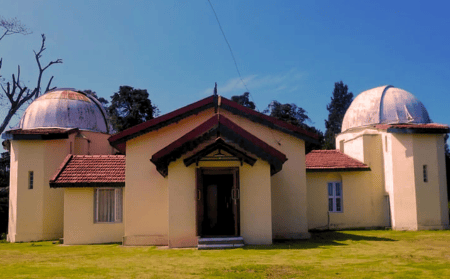
The Kodaikanal Solar Observatory, nestled in the scenic Palani Hills of Tamil Nadu, was established in 1899 by the Indian Institute of Astrophysics. With its strategic location and extensive solar data collection dating back to the 19th century, it serves as a vital hub for solar research. Led by a team of two scientists and nineteen technicians, equipped with advanced instruments like the Doppler and seismograph, the observatory plays a crucial role in studying solar phenomena. Notably, it was here that the Evershed effect was first discovered in 1909, elevating its status as a premier solar physics lab in India.
Day 3:
Manvannur Lake:
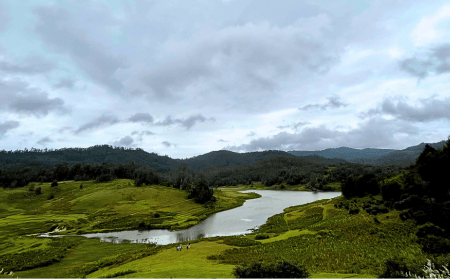
Mannavanur Lake in Kodaikanal is a must-visit destination, located about 34 km away from the town. Surrounded by dense forests, this serene lake offers a tranquil escape from city life. The journey to the lake takes you through picturesque meadows and lush greenery, providing glimpses of diverse avian fauna and occasional wildlife sightings. Visitors can enjoy picnics by the lake, go boating, or take coracle rides while immersing themselves in the beauty of nature. Mannavanur is an ideal spot for nature lovers seeking peace and relaxation away from the hustle and bustle of urban areas.
Manavannur Sheep research Center:
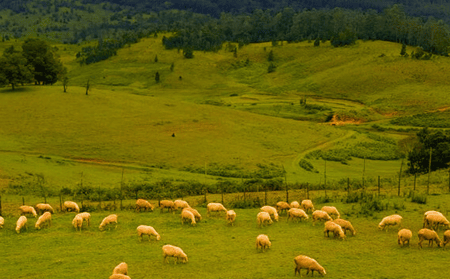
Nestled 30 km away from Kodaikanal in Mannavanur village, the Manavaunur Sheep Research Center is a haven for sheep and rabbit breeding. Established in 1965 by former Agriculture Minister Shri C. Subramaniam, this center breeds various species including Angora and Chinchilla for their wool and meat. Spanning across 1,340 acres of rolling grassland at an altitude of 2,000 meters, it serves as one of the last extensive chunks of high-altitude grassland in the Palani Hills. Visitors can witness a variety of wildlife, including spotted deer, gaur, and wild dogs, while the small lake within the center hosts common carp and otters.
Chettiar park:
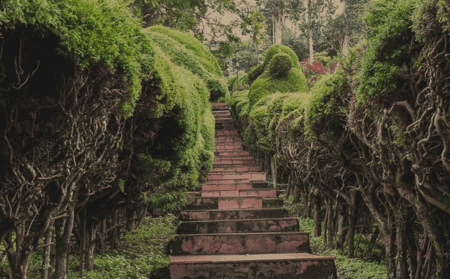
Chettiar Park, nestled in Kodaikanal and maintained by the local township, offers a serene escape amidst lush greenery and scenic vistas. With its well-kept lawns and vibrant flowers, including the renowned Kurinji Flowers that bloom every 12 years, the park provides an ideal setting for spending quality time with loved ones. Popular among nature enthusiasts and photographers alike, this tranquil haven boasts meticulously landscaped gardens and picturesque walkways, making it a must-visit destination for those seeking peace and natural beauty.
Kurinji andavar temple:
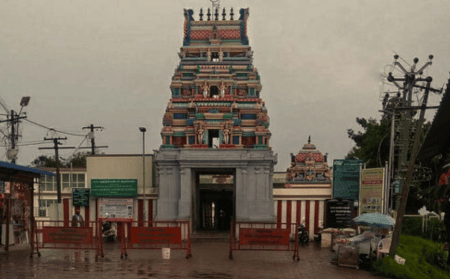
Kurinji Andavar Temple, situated near Chettiar Park in Kodaikanal, is a revered shrine dedicated to Lord Murugan, affectionately known as Lord Kurinji Andavar. The temple holds special significance for its association with the Kurinji flower, which blooms once in 12 years, lending its name to the deity. Adorned with idols of the Navagraha gods, the temple offers devotees and visitors alike a tranquil haven amidst the picturesque landscapes of the Western Ghats. Built in 1936 by a European devotee-turned-Hindu, the temple’s architectural charm reflects a fusion of Tamil and European styles, adding to its allure as a spiritual and architectural gem in Kodaikanal.
Author - Jay
Jay is a passionate traveler and a Digital Marketer, The digital marketer traveler embarks on journeys to explore new cultures, seeking inspiration for creative online campaigns that resonate with diverse audiences worldwide
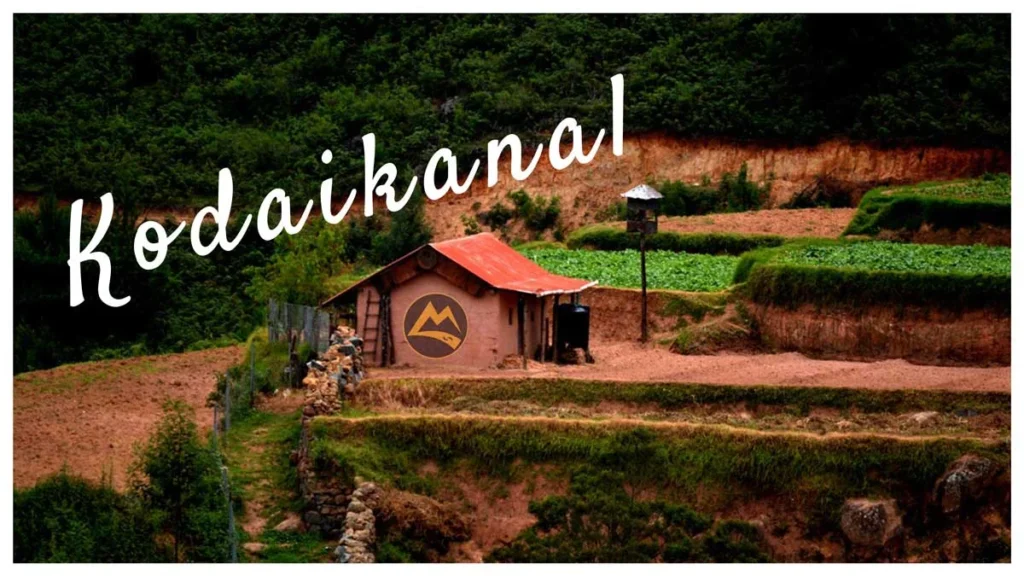
Kodaikanal 2 Days Backpacking Trip – Bangalore
Dandeli Tour Packages, Munnar Tour Packages, Gokarna Murudeshwar Honnavar Tour, Kodiakanal Tour Packages , Kotagiri and Conoor Tour Packages, Coorg Tour Packages, Ooty Tour packages, Wayand Tour Packages, Chikmagalur 2 days tour packages, Agumbe Tour Packages, Malvan Scuba Diving, Coorg Long Weekend Tour Packages, Mulki Kayaking Packages.
Sikkim Tour Packages(6D/5N), Nagaland Tour Packages with Dzukou Valley, Meghalaya Tour Packages(No Trekking), Hornbill Festival Tour With Dzukou Trek- Nagaland (6D/5N), Nagaland Backpacking Trip With Dzukou Valley Trek (6D/5N), Meghalaya Backpacking Trip(6D/5N), Tawang Backpacking Trip (7D/6N), Sikkim Backpacking Trip (6D/5N), Tawang Private Trip, Kaziranga National Park Safari (2D/2N),
